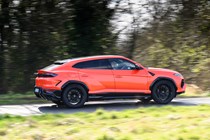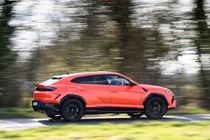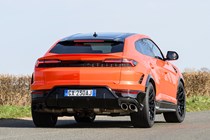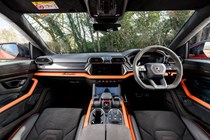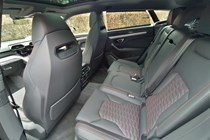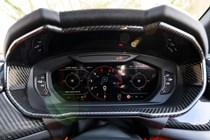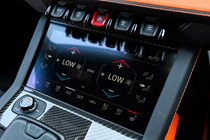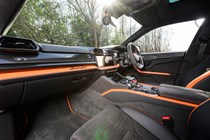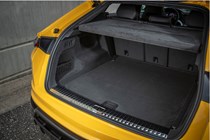
Lamborghini Urus review
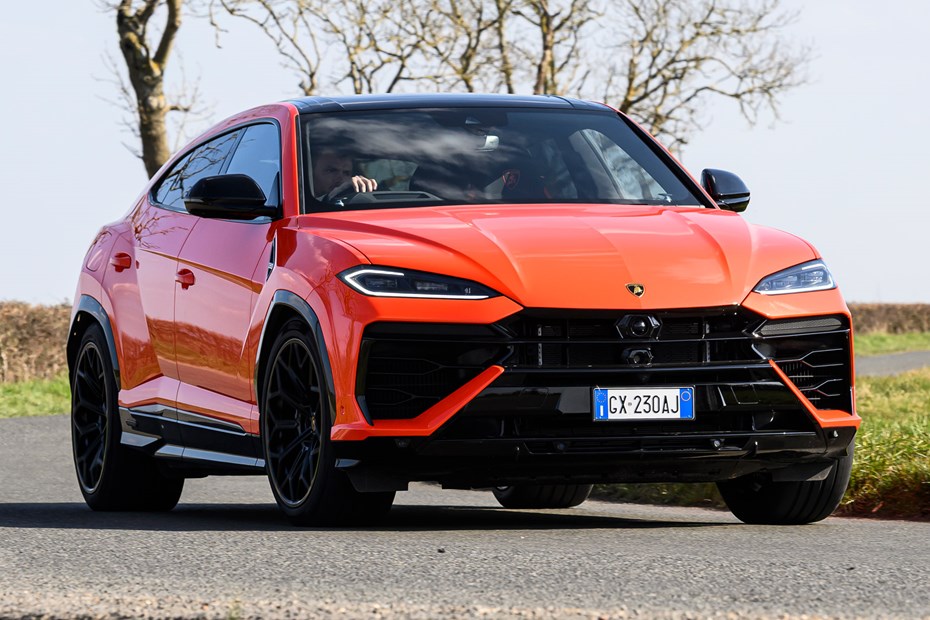
At a glance
| Price new | £192,054 - £220,853 |
|---|---|
| Used prices | £108,072 - £231,119 |
| Road tax cost | £620 |
Get an insurance quote with

|
|
| Fuel economy | 20 - 22.2 mpg |
| Miles per pound | 2.9 - 3.3 |
| Number of doors | 5 |
| View full specs for a specific version | |
Available fuel types
Petrol
Hybrid
Pros & cons
- Exceptionally strong performance
- Well-made and special interior
- Hybrid system boosts both pace and efficiency
- Firm ride on 23-inch wheels
- Very expensive to buy
- Running costs will still be steep
Lamborghini Urus SUV rivals
Overview
If you want one of the flashiest, fastest and most expensive SUVs, you won’t do much better than the Lamborghini Urus. It’s helped transform the Italian brand, renowned for its supercars, and the Urus is now by far its most popular car, lifting annual sales to more than 10,000 units per year consistently since its release.
But it’s not all for show as the Urus is a surprisingly talented large family SUV, offering plenty of space and comfort so that those with deep enough pockets can use it every day as their main car. Following its launch in 2018, Lamborghini revised it in 2021 with a new ‘S’ version replacing the standard car, and the top-tier Performante introduced as a more track-focused version.
For 2025 the Urus was given a significant mid-life update, with a new exterior design and tweaked interior freshening things up. But by far the biggest change is under the surface, as it’s now sold exclusively as a plug-in hybrid – its been renamed Urus SE as a result. It means that, alongside the Ruvuelto and Temerario, every new car Lamborghini sells is now a hybrid.
But don’t think this is a hybrid all about fuel economy as the Urus still uses a twin-turbo V8 petrol engine as its base. Paired to an electric motor, the system develops a huge 800hp allowing for some astonishing performance figures.
Key rivals for the Urus include the Aston Martin DBX and Ferrari Purosangue, both of which are among the best-driving SUVs you can buy. You could also consider the Audi RSQ8, Porsche Cayenne and Bentley Bentayga, which all use loosely the same underpinnings as the Urus as they’re all part of the Volkswagen Group.
Following our first drive on and off-road in Italy in 2024, we’ve now driven the updated Urus SE for the first time in the UK – find out more about how we test cars at Parkers. Read on to discover everything you need to know about the Lamborghini Urus and, importantly, whether we think it’s worth buying.





